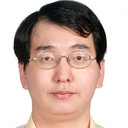Orofacial pain and headaches associated with exfoliation glaucoma.
Mots clés
Abstrait
Exfoliation syndrome is the most common identifiable cause of open-angle glaucoma. The authors report a case of exfoliation glaucoma in a patient who had orofacial pain.
A 77-year-old woman was treated at the orofacial pain clinic for left-sided facial pain and headaches of 7 months' duration. Her cataracts and open-angle glaucoma had been diagnosed approximately 3 years earlier. Her main symptoms were orofacial pain, eye redness, inflammation of the eyelids, and eyelid edema. Magnetic resonance imaging showed no evidence of intracranial or extracranial pathology. Hemicrania continua was considered as a possible diagnosis. Indomethacin was prescribed but did not affect her headaches. She then went to an ophthalmologist to rule out secondary headaches. Intraocular pressure was 13 millimeters of mercury in the right eye and 67 mm Hg in the left eye. The ophthalmologist made a diagnosis of exfoliation glaucoma, and the patient underwent surgical treatment for the glaucoma and cataracts. After surgery, she was free of symptoms, and intraocular pressure was 15 mm Hg in the left eye.
During differential diagnosis, dentists need to consider intraoral and systemic conditions that can mimic odontogenic or orofacial pain disorders in the patient's medical history and that have a higher incidence associated with the patient's age.


